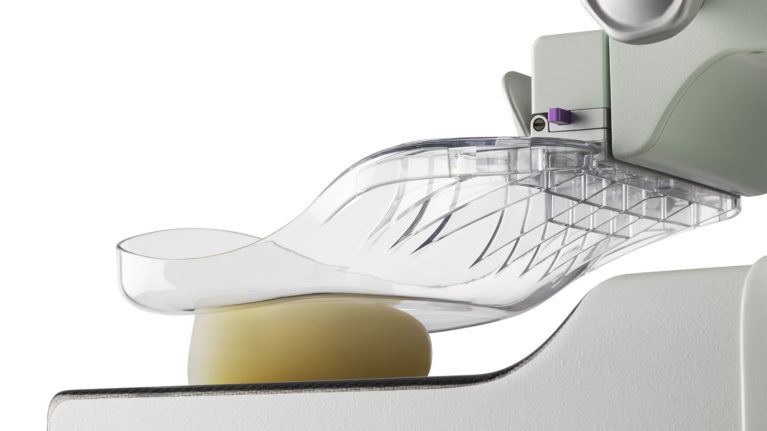Mammograms Are Not All Equal

Life Is Better in 3D™
Just like your electronic devices, breast health imaging technology has advanced in leaps and bounds over the past couple of decades. Today, you can reap the benefits of the most up-to-date breast health technology, a 3D® Mammography™ exam. Among the latest Genius™ exam innovations is high-resolution 3D imaging*. Same Genius exam, even sharper and more detailed HD images.
Discover the Difference
A 2D mammogram takes two pictures of your breasts: one from the side and another from above. But as the breasts get compressed, breast tissue overlaps. This overlap may hide small breast cancers in 2D images.
A 3D mammography™ exam, known as digital breast tomosynthesis, takes multiple images of each breast from many angles. Unlike a 2D exam, 3D mammography™ allows the doctor to examine your breast tissue one layer at a time. Imagine a book. When you look at the cover, you can’t see all of the pages. But page through the book and you’ll see everything between the covers. 3D mammography™ exams show the radiologist all of the pages in the book.
The Genius Difference
Why It’s Genius
- The Genius exam detects 20%–65% more invasive breast cancers than 2D alone.1 That can mean earlier diagnosis for many women.
- Scans last just 3.7 seconds.7 That’s quicker than any other exam.
- Fewer callbacks11-13 compared to 2D alone lead to peace of mind. Why get more tests and biopsies when you don’t have to?
- Produces images that allow your radiologist to better spot areas of concern in dense breast tissue compared to 2D alone.
- Designed to respond to the shape of your breasts for a more comfortable experience. The new SmartCurve® system adds a new level of comfort.
The Skinny on Breast Density
Breasts are like fingerprints. They’re unique to you and to every woman in your tribe. Every woman’s breasts are composed of the same types of tissue — fibrous, glandular, and fatty. But some women have more fatty tissue, and some have less — which means they have more of the dense, fibrous and glandular tissue. It’s not something you can feel, so even if you think your breasts are firm, it doesn’t mean they’re dense.
Today, nearly half of women over age 40 have dense breasts.22 The best way to detect breast density is through a mammogram.
 |
 |
 |
 |
| Breasts are almost all fatty tissue. | There are scattered areas of dense glandular and fibrous tissue. |
More of the breast is made of dense glandular and fibrous tissue. |
Breasts are extremely dense. |
It’s important to know about your breast density, because having dense breasts can raise your cancer risk. And there’s a double whammy: In some mammograms, dense breast tissue can hide cancers, especially in their earliest and most treatable stages. An easy way to imagine dense breast tissue is as clouds in the sky, with breast cancers as white planes in flight. When a plane flies through wispy clouds, you can still see the plane in the air, but when a plane flies through thick clouds, it can be nearly impossible to detect. A 3D exam allows the radiologist to see through those thick clouds. That’s why the Genius exam is the only mammography exam that’s FDA approved as superior for women with dense breasts.2,36

